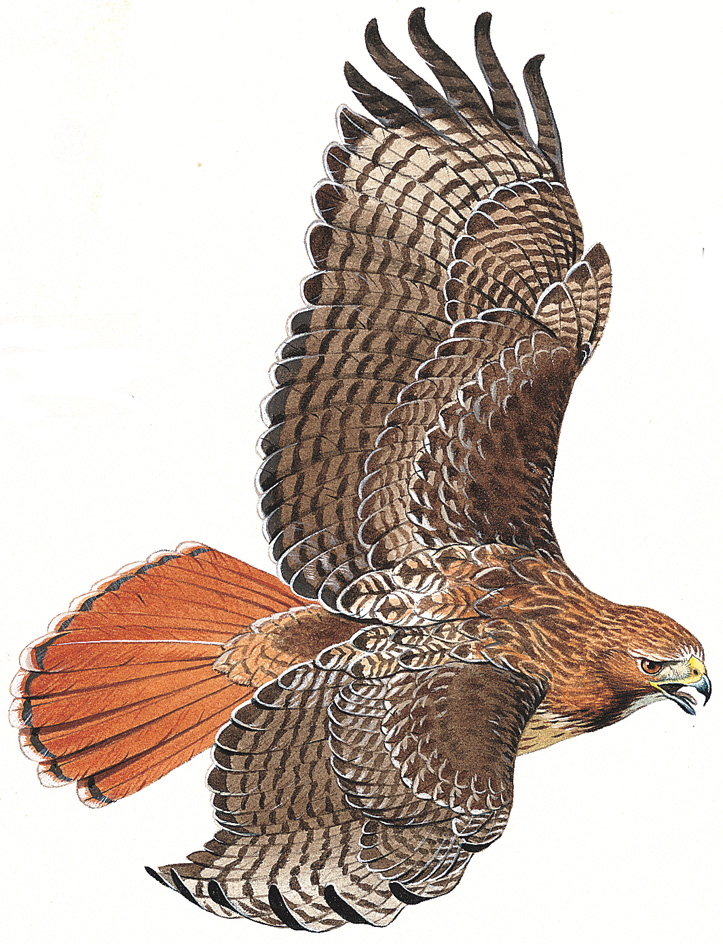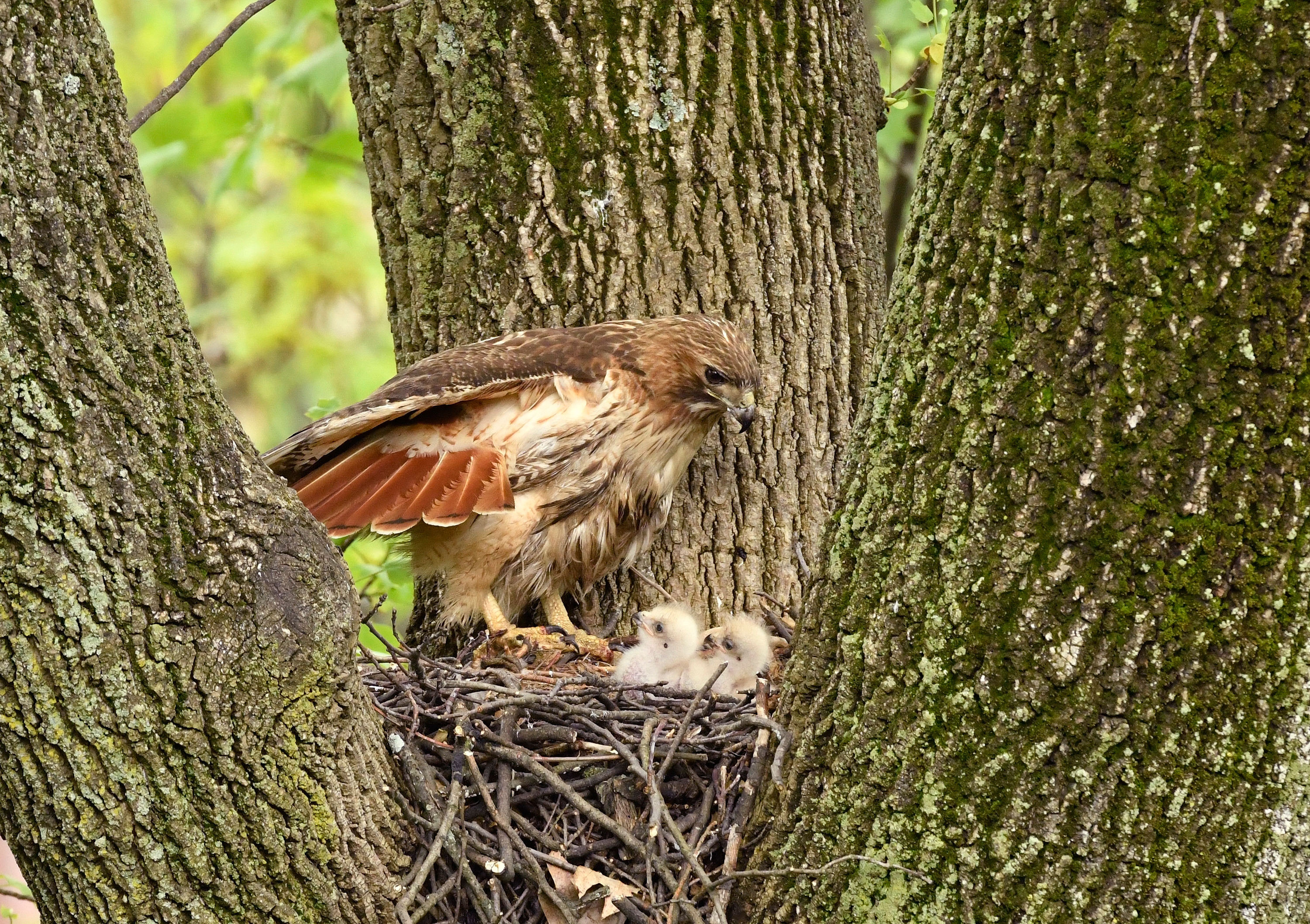Red-tailed hawk is a large, stocky bird of prey. The red-tailed hawk is one of the most common hawks of North America. It lives throughout the continent and the Caribbean Islands. Red-tailed hawks prefer open spaces with places to perch, but they can adapt to almost any habitat. The red-tailed hawk has a distinctive, piercing call that sounds like “keeeeer.”
Loading the player...Red-tailed hawk
Adult red-tailed hawks measure 18 to 26 inches (45 to 66 centimeters) long. The average wingspread of an adult red-tailed hawk is about 50 inches (130 centimeters). Adults may weigh between 1 ½ and 3 pounds (700 and 1,400 grams). Females are larger than males.

Red-tailed hawk
Red-tailed hawks vary in coloration. Most adults have a rust-red tail. They usually have brown plumage on the top side of their bodies. The underside of the body is lighter and often mottled with dark colors. The wing undersides are also lighter in color and often have brown, black, or red markings.
Red-tailed hawks are soaring hawks. Such hawks use their excellent eyesight to spot prey from high up in the air. They then swoop down to catch it. Red-tailed hawks feed primarily on small mammals, such as mice and rabbits. They will eat just about anything they can catch or find, however, including other birds, fish, large insects, reptiles, and fresh carrion (dead animals).
Red-tailed hawks mate for life. A female red-tailed hawk lays one to five eggs per clutch. Chicks hatch in 28 to 35 days. The female usually incubates the eggs and stays at the nest with the hatchlings while the male hunts for food. Parents continue to care for their young for as long as 13 weeks after hatching.

Many species of hawk have become threatened with extinction, largely due to the destruction of their natural habitats. However, red-tailed hawks have adapted well to environments changed by human activity. They often patrol for prey in areas cleared by humans, such as farms or roadsides.
